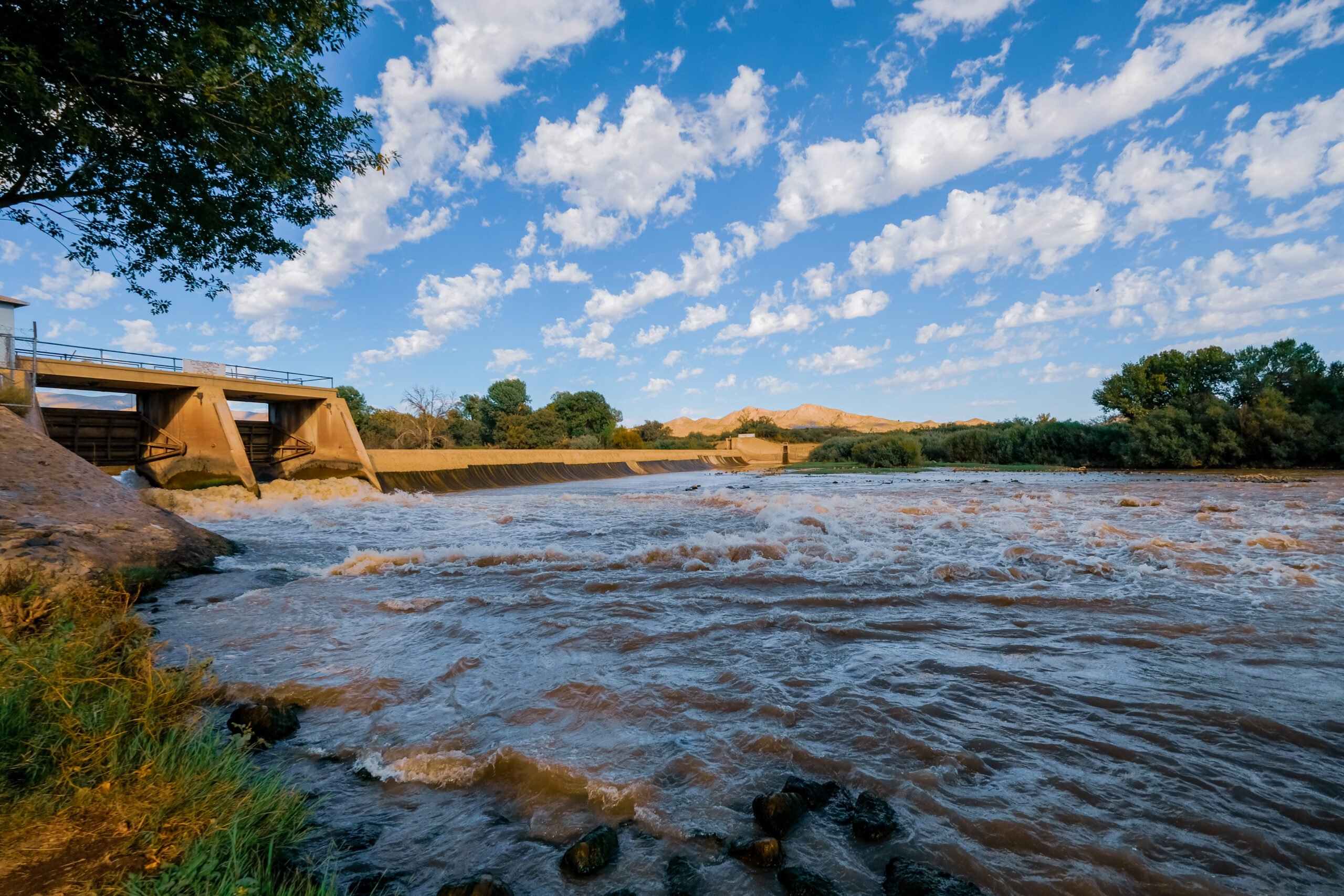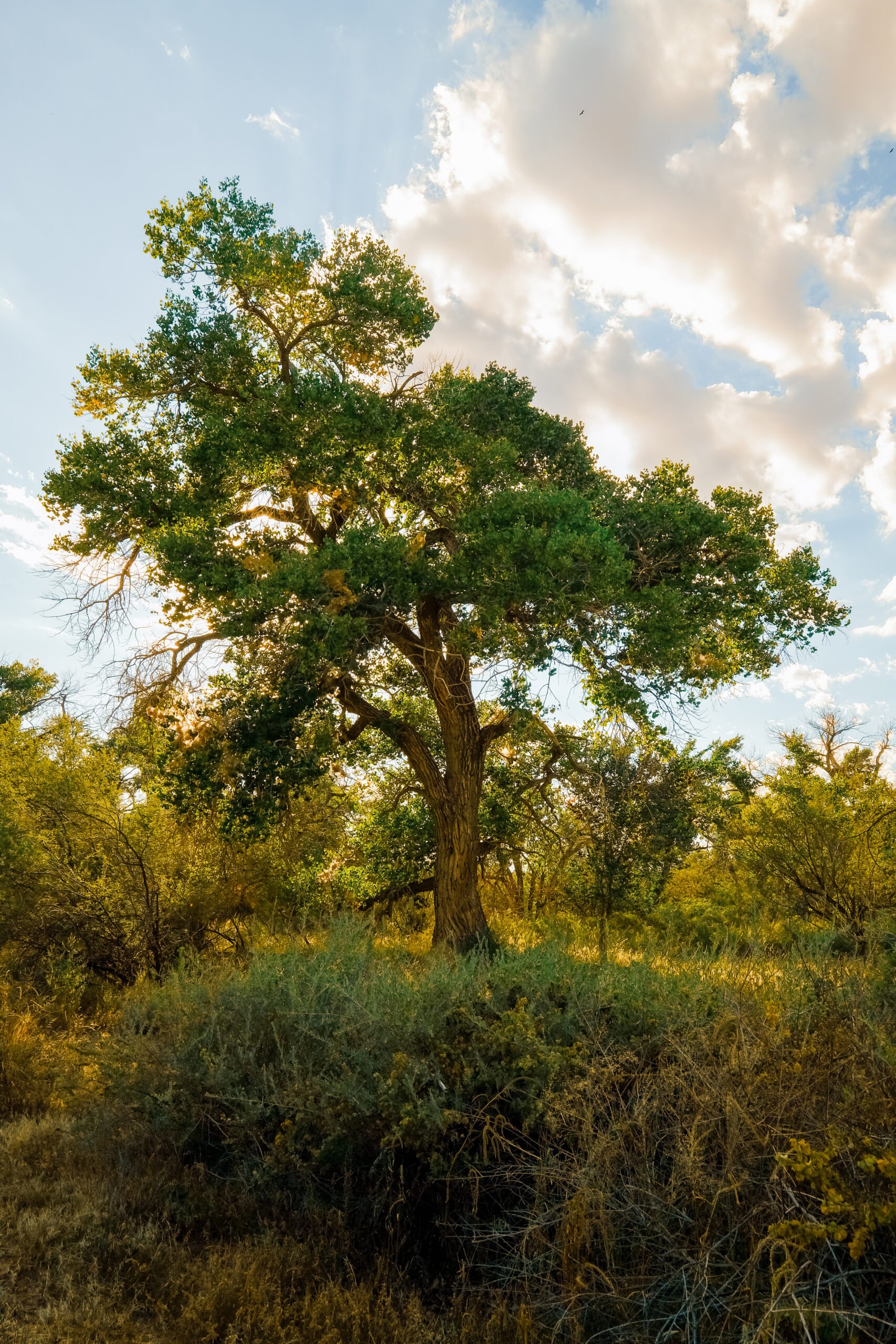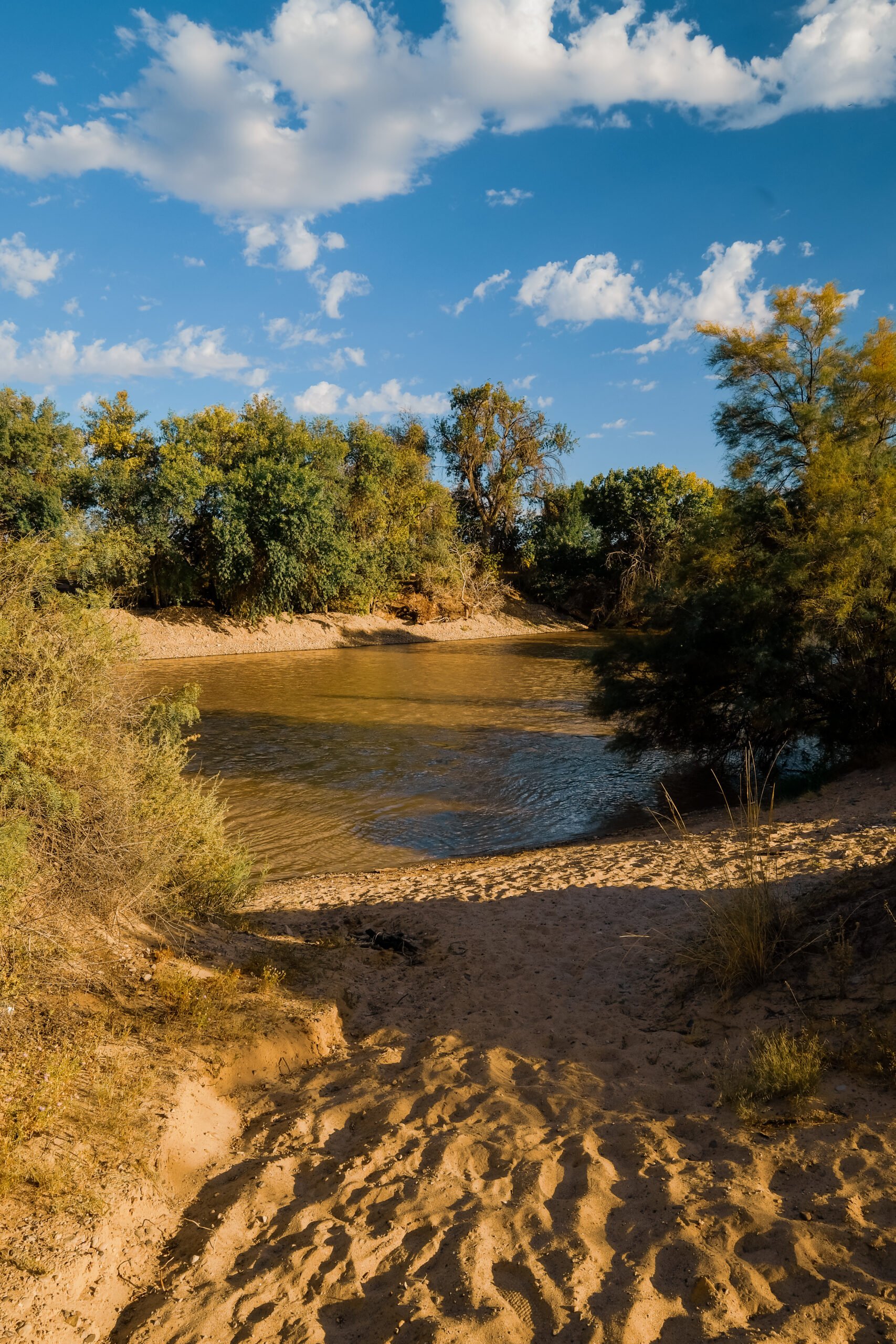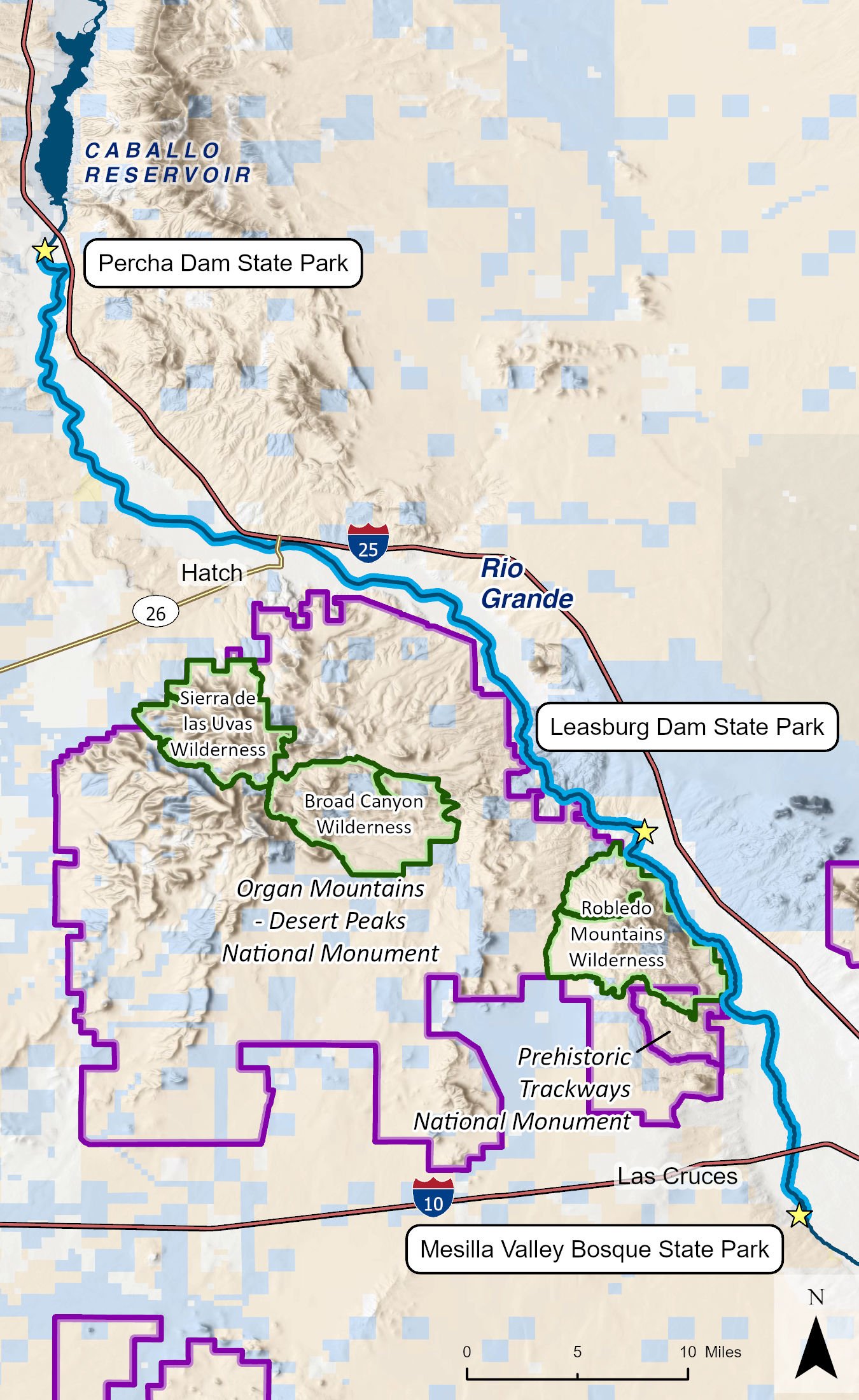
Rio Grande -- Caballo
Percha Dam State Park is one of the best places for birdwatching in Southern New Mexico. The large and healthy cottonwood-dominated bosque is home to flycatchers, woodpeckers, and vireos. Various warblers careen through the willows during spring and fall migrations. Along the river, it is easy to catch sight of ducks, shorebirds, and kingfishers while the tall cottonwoods attract hawks, owls, and falcons.

Percha Dam also serves as a put-in for a 66-mile float south to the takeout near Mesilla Valley Bosque State Park in Mesilla. There are few other reliable access points to this section of the Rio Grande upstream of Las Cruces. While the entire trip is rated Class I, it is nonetheless a challenging section of the great river due to agricultural and municipal drawdowns through most of the year, a lack of easy access, intense desert heat, and few public campsites. Flows are typically low unless excess water is being released from Elephant Butte Dam. This is a long and slow paddle but with great rewards for those who give it a chance. When flows are up, excellent tubing opportunities also exist between La Llorona Park in Las Cruces and the Calle Del Norte Bridge near Mesilla Valley Bosque State Park.
Along this stretch, the Rio Grande parallels Interstate 25 to the east but at enough distance to generally not hear the roar of traffic. Small farms, vineyards, pecan orchards, ghost towns, small villages, and fields of green chile dot the route. The riparian forest is rich with large cottonwoods and wildlife—beaver and porcupine are commonly seen. The section offers outstanding opportunities for solitude, exploration, and wildlife viewing. About 35 miles below Percha Dam sits Leasburg Dam State Park, another top birding area and well known for fishing opportunities. Similarly, Mesilla Valley Bosque State Park, an Audubon designated Important Birding Area located at the end of this segment, also offers outstanding birding opportunities.

This section is also part of the Rio Grande Rift, a north-south continental fissure extending from northern Colorado to northern Mexico. This is a land of complex geological history offering visitors evidence of volcanic activity, subduction, stretching, and even sedimentary layers.
Fort Selden Historic Site is not far from the river in Radium Springs just above Las Cruces, and Prehistoric Trackways National Monument is a little farther down the river.
This area also is home to New Mexico's famed green chile. Indigenous Americans cultivated several varieties of spicy pepper through the millennia preceding colonization, including a tiny, berry-like pepper known as chiltepin, infamous for its ability to wield a serious kick. The Spanish brought other varieties of chile north from Mesoamerica, the guajillo—the ancestor of today's green chile—among them. This long green fruit that turns red in the fall adapted perfectly to the soils and climate of south-central New Mexico, and before long a number of varieties were under cultivation.
Caballo Lake, Percha Dam State Park, and Leasburg State Park offer the only public camping options along this section of the Rio Grande. Wild camping options are available along the route but may be challenging to locate.
Take plenty of drinking water and food and protect yourself from the sun with long pants, a long-sleeved shirt, hat, sunglasses, and sunscreen.

South-central New Mexico in Sierra and Dona Ana Counties, about 160 miles south of Albuquerque and north of Las Cruces
Percha Dam State Park to Mesilla Valley Bosque State Park
66 miles
4,143 to 3,874 feet
Private, Bureau of Land Management, New Mexico State Parks, and State Land Office
Tubing, swimming, waterplay, birdwatching, canoeing
The Rio Grande Caballo run is seldom floated, though when flows rise in the Las Cruces area people commonly enjoy tubing and floating between parks and open space areas on the lower end of this segment. This is a flatwater float and for multi-day trips flows upwards of 500 cfs are recommended, which are most likely to occur during spring runoff. No river permit is required.
Spring to early summer
Below the dam at Percha Dam State Park, 60 miles north of Las Cruces on Interstate 25; Leasburg Dam State Park in Radium Springs; and Mesilla Valley Bosque State Park near Las Cruces

